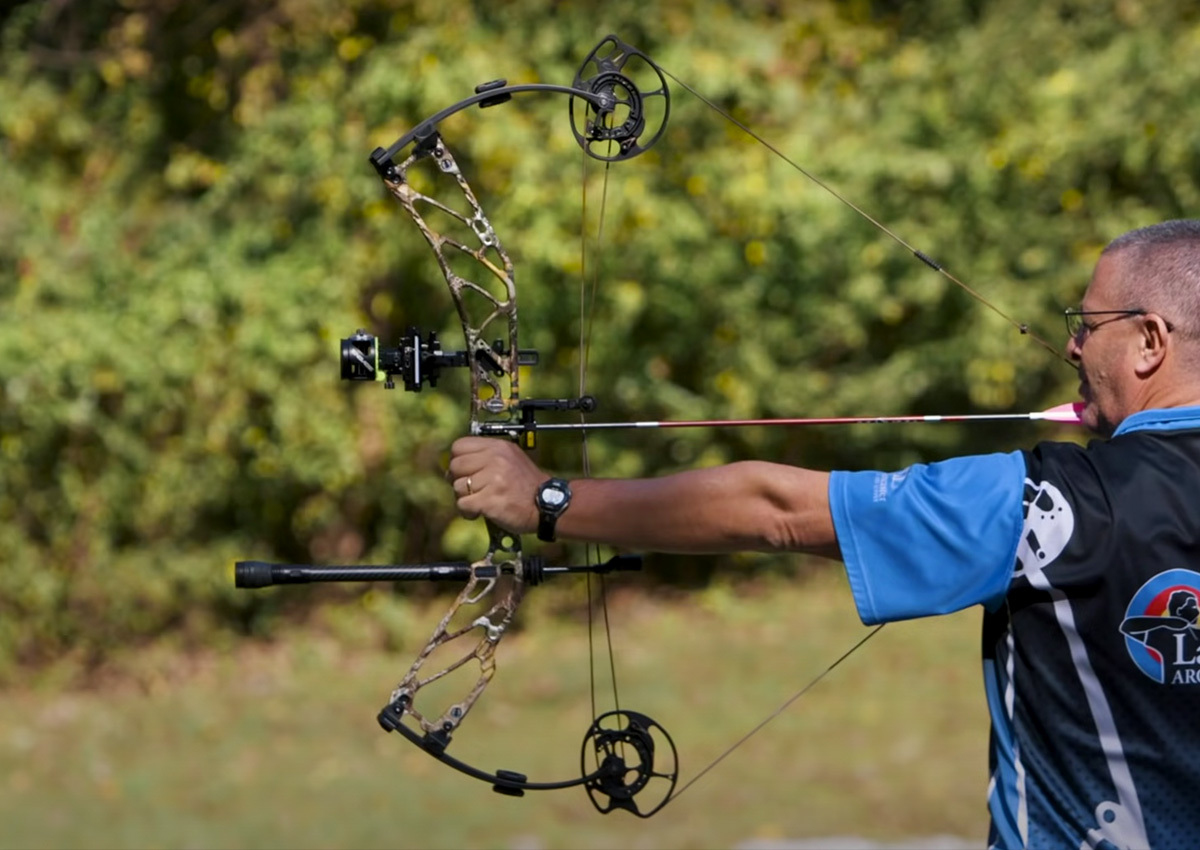Maximize Your Archery Precision With These Bow Stabilizer Methods
In the realm of archery, accomplishing optimal precision is a pursuit that requires meticulous attention to detail and strategy. One critical component that can considerably impact your efficiency is the proper utilization of bow stabilizers. These often-overlooked accessories hold the possible to raise your capturing efficiency to brand-new elevations, yet only if used properly. By discovering the nuanced techniques of selecting, mounting, and adjust bow stabilizers, archers can unlock a world of precision that may have formerly eluded them. Whether you are a seasoned archer looking to fine-tune your skills or a newbie eager to enhance your accuracy, grasping these bow stabilizer methods could be the secret to hitting your mark with unmatched consistency.
Advantages of Utilizing Bow Stabilizers
Making use of bow stabilizers can dramatically boost an archer's accuracy and general efficiency by minimizing bow torque and vibration. Bow torque, caused by the unequal distribution of weight in the bow, can result in incongruities in shot positioning. By affixing a bow stabilizer, the weight is rearranged, decreasing the effects of torque and helping the archer attain a much more consistent shot. Additionally, bow stabilizers moisten vibration, which not just improves the comfort of capturing yet also prevents the bow from jumping upon release, hence helping in maintaining correct goal.
In addition, bow stabilizers can assist in holding the bow consistent, specifically throughout windy problems or when shooting from longer distances. The included weight at the front of the bow gives stability and equilibrium, permitting the archer to concentrate on intending without the disturbance of bow activity. Generally, the benefits of using bow stabilizers extend beyond just precision, boosting the archer's experience and performance in numerous shooting scenarios.
Picking the Right Bow Stabilizer
Choosing the appropriate bow stabilizer is vital for optimizing your archery tools and enhancing shooting efficiency. Much heavier stabilizers can help minimize bow torque and soak up more vibration, leading to a steadier goal.

Last but not least, consider the layout of the stabilizer. Some stabilizers include adjustable weights or dampeners that allow you to tailor the equilibrium and feel of your bow. Ultimately, selecting the ideal bow stabilizer entails locating an equilibrium between weight, material, length, and layout to boost your capturing precision and overall performance.
Appropriate Setup Techniques
To guarantee optimum performance and security in archery, mastering correct setup strategies for your bow stabilizer is vital. The initial step in installing a bow stabilizer is to determine the correct placement on your bow. Most stabilizers are connected to the front of the riser, listed below the grasp, to aid counterbalance the weight of devices such as quivers and sights. Make certain that the stabilizer is not conflicting with various other parts or hindering your shooting type.
Following, firmly connect the stabilizer to the bow making use of the proper mounting hardware. It is critical to tighten the stabilizer well to stop any type of wobbling throughout shots. Some stabilizers include flexible weights that can be added or eliminated to fine-tune the balance of your bow. Trying out different weight configurations to find the optimal balance that suits your capturing design.

Adjusting Stabilizer Weight and Size
After guaranteeing the appropriate installation of your bow stabilizer, the look at this website next action involves changing the weight and size to maximize its efficiency in enhancing archery precision. The weight of the stabilizer plays a critical function in minimizing bow movement during the shot cycle. Adding weight to the stabilizer can aid wet vibrations and boost stability, causing even more constant and precise shots. On the other hand, reducing the weight can raise maneuverability, which is valuable for scenarios calling for quick target purchase.
A longer stabilizer can provide higher stability by boosting the distance between the bow and the weight at the end of the stabilizer. On the other hand, a much shorter stabilizer provides much more ability to move and might be chosen by archers that value dexterity and fast movements during capturing.
Advanced Stabilizer Tuning Tips
Achieving ideal bow stability and precision in archery demands a nuanced approach to advanced stabilizer tuning. Advanced stabilizer tuning includes check out this site fine-tuning different parts to enhance the bow's equilibrium, minimize vibration, and improve total accuracy. One crucial method is to trying out different stabilizer setups, including side-bar and back-bar setups, to find the perfect balance between security and maneuverability for your shooting design. bow stabilizer. Furthermore, changing the angle and positioning of the stabilizer can have a substantial influence on just how the bow responds upon release.
An additional crucial facet of innovative stabilizer tuning is optimizing the damping residential properties of the stabilizer system. This can be attained by integrating added dampening devices such as rubber dampeners or harmonic stabilizers to even more reduce vibration and sound. Additionally, discovering various products for the stabilizer building, such as carbon fiber or aluminum, can additionally influence the bow's efficiency by modifying its weight circulation and rigidity. By carefully fine-tuning these advanced stabilizer components, archers can optimize their accuracy and uniformity on the variety or in competitors.
Conclusion
In final thought, taking full advantage of archery accuracy can be achieved through the appropriate selection, setup, and change of bow stabilizers. On the whole, incorporating bow stabilizers into archery method can lead to enhanced efficiency and increased accuracy.
Making use of bow stabilizers can significantly improve an archer's precision and total performance by reducing bow torque and resonance. Longer stabilizers provide greater stability and balance, particularly for long-distance shooting, while much shorter stabilizers supply more adaptability and are easier to navigate in limited areas (bow stabilizer). see here Carbon fiber stabilizers are lightweight and long lasting, while aluminum stabilizers are durable and give excellent resonance wetting
A longer stabilizer can offer greater stability by enhancing the distance between the bow and the weight at the end of the stabilizer.Another important element of advanced stabilizer adjusting is maximizing the damping residential or commercial properties of the stabilizer system.